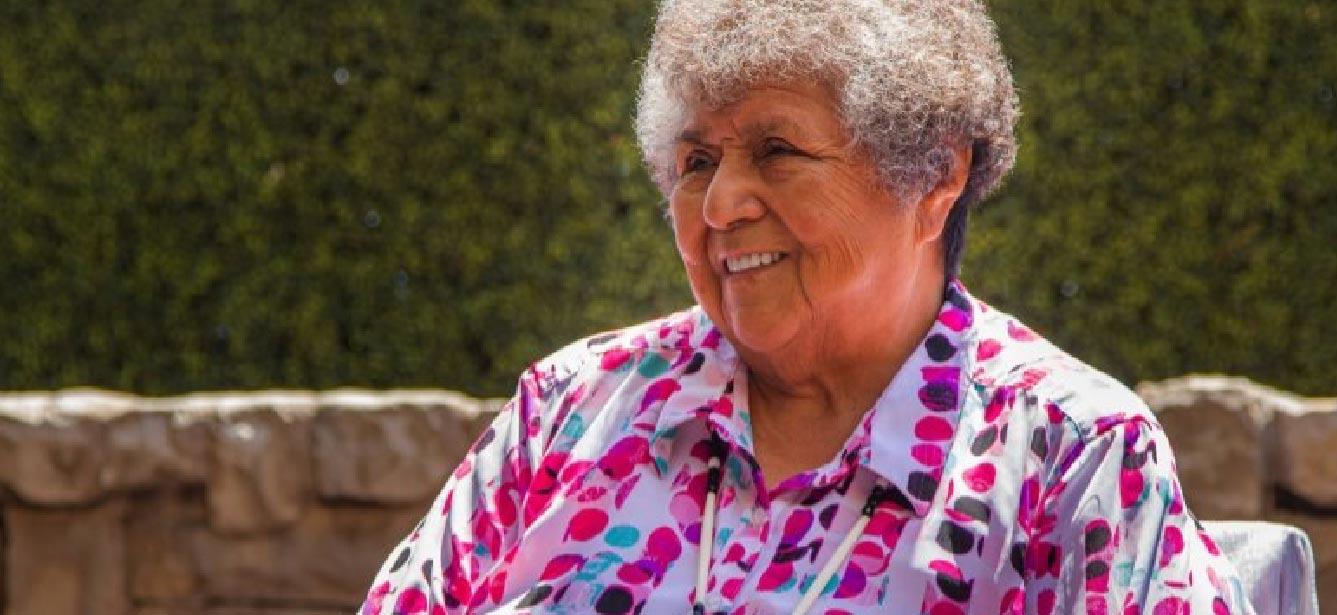American Indians and Alaska Natives: Key Demographics and Characteristics
5 min read

Compared with other racial and ethnic groups in the United States, people who are American Indian or Alaska Native (AI/AN) make up a relatively small part of the population. Thus, AI/AN people are often considered an “invisible minority,” which makes recognition by established government-reported tracking scales ineffective and outdated.
A snapshot of the U.S. American Indian/Alaska Native population
Race, like all other US Census data, is self-reported. Since 2000, the US Census allowed people to indicate more than one race. Those who marked “American Indian or Alaska Native” along with one or more additional races are classified as “American Indian or Alaska Native in combination.” Those who marked only “American Indian or Alaska Native” are categorized as “American Indian or Alaska Native alone.”
In 2021, there were 9.7 million AI/AN people (alone or in combination), comprising 2.9% of the total U.S. population of 329.5 million. This is an increase of 86.5% from the last Census.1
Age
- According to Census data, 10.2% of AI/AN (alone) people are 65 or older, compared to 16.8% for the United States overall.
- Approximately 27% of AI/AN people are under the age of 18, compared to 18.9% of the non-Hispanic white U.S. population.2
Veteran status
- American Indian and Alaska Native people have served with distinction in the U.S. military in every major conflict for over 200 years.
- AI/AN people serve in the military at five times the national average.
- Today, nearly 20% of all AI/AN service members are women, compared to 15.6% of all service members who are women.3
Geography and tribal communities
In 2022, there were 324 federally recognized American Indian reservations.4
- An Indian reservation is an area of land managed by an AI/AN tribe under the United States Department of the Interior's Bureau of Indian Affairs.
- There are 574 federally recognized American Indian and Alaska Native tribes. Not all recognized tribes have a reservation—some have more than one reservation, some share reservations, and others have none.
- The collective geographical area of all reservations is 56.2 million acres, representing 2.3% of the United States’ 3.794 million square miles.5

- The following are the 10 largest Indian tribes: Navajo Nation (399,567), Cherokee Nation (292,555), Choctaw Nation (255,677), Chippewa (214,026), Sioux (207,684), Blackfeet (159,394), White Mountain Apache (15,791), Muscogee Nation (108,368), Haudenosaunee Nations (114,568), Blackfeet Nation (17,321).6
- As of 2021, the largest Alaskan Native communities were the Yup’ik (33,900) and Inupiat (33,400). Other large AN groups include the Tlingit-Haida (26,100), Alaska Athabaskan (22,500), Aleut (19,300), and Tsimschian (3,800).7
- Approximately 22% of AI/AN populations live on tribal lands.8
The 10 states with the largest percentage of AI/AN people in 2020 were:
- Alaska (21.9%)
- Oklahoma (16.0%)
- New Mexico (12.4%)
- South Dakota (11.1%)
- Montana (9.3%)
- North Dakota (7.2%)
- Arizona (6.3%)
- Wyoming (4.8%)
- Oregon (4.4%)
- Washington (4.1%)9
Socioeconomic characteristics
AI/AN people rank at, or near the bottom of, nearly every social, health, and economic indicator.
Income
- Compared to all other race or ethnic populations, AI/AN populations have the highest poverty rates (24.1%)—almost twice the national rate (12.8%).10
- In 2020, the median income of AI/AN (alone) households was $45,877 compared to $64,994 for the entire nation.11
- In 2019, 18.7% of AI/AN adults age 65+ lived at the poverty level, which is more than double the poverty rate for all older Americans (8.9%).12
Food security
- Food insecurity has disproportionately affected AI/AN households, especially during the COVID-19 pandemic. One study found that 56% of AI/AN individuals across the country experienced food insecurity, with 31% reporting very low food security (the most severe level of food hardship).13
Employment
- In 2019, the overall unemployment rate for AI/AN people was 6.1%, compared to 3.7% nationwide.14
- In 2016-2018, among all AI/AN people, those living in tribal areas had an unemployment rate of 11.4%, compared to 6.6% for those who did not live in tribal areas.15
Education
According to the Bureau of Indian Affairs, in 2019, 84.4% of AI/AN people (alone or in combination) had at least a high school diploma or equivalent.16
Closely tied with education and literacy levels is health literacy, which is the degree to which individuals have the ability to obtain, process, and understand basic health information and make appropriate decisions. Low health literacy is more common among older adults, minority populations, those who have low socioeconomic status, and medically underserved people.17 Therefore, given the socio-economic and educational disparities AI/AN people face, AI/AN elders likely have a greater propensity for health literacy issues.
Housing
Housing problems for AI/AN households relate to the quantity, quality, and price of housing.
- According to a study from 2017, 12% of homes in tribal areas had heating deficiencies, 7% had kitchen deficiencies, and 6% had inadequate plumbing. Nationwide, only 1-2% of homes suffer each of these conditions.
- Housing affordability is the most common problem for AI/AN households. Approximately 38% of AI/AN households were cost-burdened, meaning more than 30% of their income goes towards paying for housing, compared to 36% nationally.
Homelessness in tribal areas often leads to overcrowding (having more than one person per room).
- In a study from 2017, approximately 42,000-85,000 people in Native American communities stayed with friends or relatives because they had no place of their own.
- Among all AI/AN households in tribal areas, 16% are overcrowded, compared to 2% of all US households.18
Economic disparities among urban American Indians
AI/AN migration to urban areas represents one of the most significant demographic shifts in U.S. history. In 1970, 38% of all AI/AN people lived in urban areas.19 In 2020, 87% of all AI/AN people identified in the Census lived outside of tribal statistical areas, with 60% living in metropolitan areas.8,16
- The unemployment rate of urban American Indians is 11.2% compared to 4.9% of non-Hispanic whites (NHW) in urban areas.
- About 79.5% of urban American Indians had at least a high school diploma, compared to 94.5% of NHW in urban areas.
- Nearly one-quarter (24.5%) of AI/AN individuals lived in poverty compared to 8.9% of NHW individuals.
- Long-term economic stability is also undermined by the fact that:
- Urban AI/AN indviduals are more likely to rent (54.7%) than own (45.3%) their housing unit.
- In contrast, among NHW, 33.8% rented, and 66.2% owned their housing unit.20
Health disparities
American Indians and Alaska Natives continue to die at higher rates than other Americans in many categories and have long experienced lower health status when compared with other Americans. Although disparities in health outcomes have been demonstrated over time among AI/AN communities, interpretation of these findings has been limited due to underreporting and misreporting. Lower life expectancy and the disproportionate disease burden are a result of inadequate education, disproportionate poverty, discrimination in the delivery of health services, and cultural differences. These are broad quality of life issues rooted in economic adversity and poor social conditions.21
- Life expectancy at birth for American Indians/Alaska Natives in 2021 was 65.2 years, which is equal to the life expectancy of the total population in 1944. In comparison, for the total U.S. population in 2021, the projected life expectancy at birth was 76.1 years.22
- In 2018, the prevalence of heart disease among adults aged 18 and over for AI/AN (alone) was 8.2% compared to 5.6% for NHWs.23
- There was a 5.8% death rate linked to diabetes for AI/ANs compared with 3.0% for the general population.24
- A study of death certificate data revealed that mental health and substance use disorders continue to be a major cause of premature deaths among AI/AN populations, mainly due to liver disease, suicides, and injuries.25
- According to a study by the National Resource Center on Native American Aging, 79.1% of elders (aged 55+) surveyed reported 1-4 chronic illnesses. The most commonly reported illness was high blood pressure (58.1%). 26
Acknowledgments
Special thanks to the following who provided feedback on this fact sheet:
- Dr. J. Neil Henderson, Professor Emeritus, Department of Family Medicine & Biobehavioral Health, University of Minnesota Medical School, Duluth Campus
- Cynthia LaCounte, Office for American Indians, Alaskan Natives and Native Hawaiian Programs, Administration on Aging/Administration for Community Living
Sources
1. U.S. Census Bureau. (2022, October 11). Facts for Features: American Indian and Alaska Native Heritage Month: November 2022. https://www.census.gov/newsroom/facts-for-features/2022/aian-month.html
2. National Congress of American Indians. June 1, 2020. Demographics. Found on the internet at https://www.ncai.org/about-tribes/demographics
3. National Indian Council on Aging. November 8, 2019. American Indian Veterans Have Highest Record of Military Service. Found on the internet at https://www.nicoa.org/american-indian-veterans-have-highest-record-of-military-service/
4. U.S. Census Bureau. 2021, October 4, 2021. Facts for Features: American Indian and Alaska Native Heritage Month: November 2021. Found on the internet at https://www.census.gov/newsroom/facts-for-features/2021/aian-month.html
5. U.S. Department of the Interior Bureau of Indian Affairs. August 19, 2017. What is a Federal Indian Reservation? Found on the internet at https://www.bia.gov/faqs/what-federal-indian-reservation
6. Trinidad, K. November 5, 2021. Biggest Native American Tribes in the U.S. Today. Stacker. Found on the internet at https://stacker.com/stories/3437/biggest-native-american-tribes-us-today
7. Minority Rights Group International. (n.d.). Alaska Natives. Found on the internet at https://minorityrights.org/minorities/alaska-natives/
8. U.S. Census Bureau. (2020). American Indian and Alaska Native (AIAN) Heritage Month: AIAN Alone or in Combination by State: 2020. https://www.census.gov/content/dam/Census/library/visualizations/2022/comm/aian-month.pdf
9. Rezal, A. November 26, 2021. Where Most Native Americans Live. U.S. News. Found on the internet at https://www.usnews.com/news/best-states/articles/the-states-where-the-most-native-americans-live
10. U.S. Census Bureau. 2020. 2020 ACS 5-year estimates [S1701 - Poverty Status in the Past 12 Months]. Found on the internet at https://data.census.gov/cedsci/table?q=Income%20and%20Poverty&tid=ACSST5Y2020.S1701
11. U.S. Census Bureau. 2020. 2020 ACS 5-year estimates [S1903 - Median Income in the Past 12 Months]. Found on the internet at https://data.census.gov/cedsci/table?q=Income%20%28Households,%20Families,%20Individuals%29&tid=ACSST5Y2020.S1903
12. U.S. Administration for Community Living. 2020. 2020 Profile of American Indians and Alaska Natives Age 65 and Older. Found on the internet at https://acl.gov/sites/default/files/Profile%20of%20OA/AIANProfileReport2021.pdf
13. Maillacheruvu, S.U. October 4, 2022. The Historical Determinants of Food Insecurity in Native Communities. Center on Budget and Policy Priorities. Found on the internet at https://www.cbpp.org/research/food-assistance/the-historical-determinants-of-food-insecurity-in-native-communities
14. U.S. Bureau of Labor Statistics. December 2020. Labor force characteristics by race and ethnicity, 2019. (Report 1088). Found on the internet at https://www.bls.gov/opub/reports/race-and-ethnicity/2019/home.htm
15. Allard, M.D. & Brundage, V., Jr. November 2019. American Indians and Alaska Natives in the US Labor Force. US Bureau of Labor Statistics. Found on the internet at https://www.bls.gov/opub/mlr/2019/article/american-indians-and-alaska-natives-in-the-u-s-labor-force.htm
16. U.S. Department of Health and Human Services Office of Minority Health. January 11, 2022. Profile: American Indian/Alaska Native. Found on the internet at https://minorityhealth.hhs.gov/omh/browse.aspx?lvl=3&lvlid=62
17. Health Resources and Services Administration. 2019. Health Literacy. Found on the internet at https://www.hrsa.gov/about/organization/bureaus/ohe/health-literacy
18. Walters, A. 2022. Native American, Alaska Native, and Native Hawaiian Housing Programs. National Low Income Housing Coalition. Found on the internet at https://nlihc.org/sites/default/files/2022-03/2022AG_5-05_Native-American-Alaska-Native-Native-Hawaiian-Housing-Programs.pdf
19. The Annie E. Casey Foundation. January 1, 2008. Urban Indian America: The status of American Indian and Alaska Native children and families. Baltimore, MD: The National Urban Indian Family Coalition. Found on the internet at https://www.aecf.org/resources/urban-indian-america
20. Urban Indian Health Institute, Seattle Indian Health Board. October 29, 2021. Community Health Profile: National Aggregate of Urban Indian Organization Service Areas. Found on the internet at https://www.uihi.org/resources/community-health-profile-national-aggregate-of-urban-indian-organization-service-areas/
21. Indian Health Service. 2019. Disparities [fact sheet]. Found on the internet at https://www.ihs.gov/newsroom/factsheets/disparities/
22. National Center for Health Statistics. August 31, 2022. Life Expectancy in the U.S. Dropped for the Second Year in a Row in 2021 [Press release]. Found on the internet at https://www.cdc.gov/nchs/pressroom/nchs_press_releases/2022/20220831.htm
23. National Center for Health Statistics. 2021. Health, United States, [2020-2021]: Table HDPrv. Found on the internet at https://www.cdc.gov/nchs/data/hus/2020-2021/HDPrv.pdf
24. Carron, R. 2020. Health Disparities in American Indians/Alaska Natives: Implications for nurse practitioners. The Nurse Practitioner, 45(6), 26-32. Found on the internet at https://doi.org/10.1097/01.NPR.0000666188.79797.a7
25. Kruse, G., Lopez-Carmen, V. A., Jenson, A., Hardie, L., & Sequist, T. D. January 26, 2022. The Indian Health Service and American Indian/Alaska Native Health Outcomes. Annual Review of Public Health. Found on the internet at https://pubmed.ncbi.nlm.nih.gov/35081315/
26. National Resource Center on Native American Aging. (2021). Title VI Needs Assessment Survey: Identifying Our Needs: A Survey of Elders Cycle VII (2017-2020) [data book]. https://www.nrcnaa.org/assets/4748-21205/2021-data-booklet.pdf



